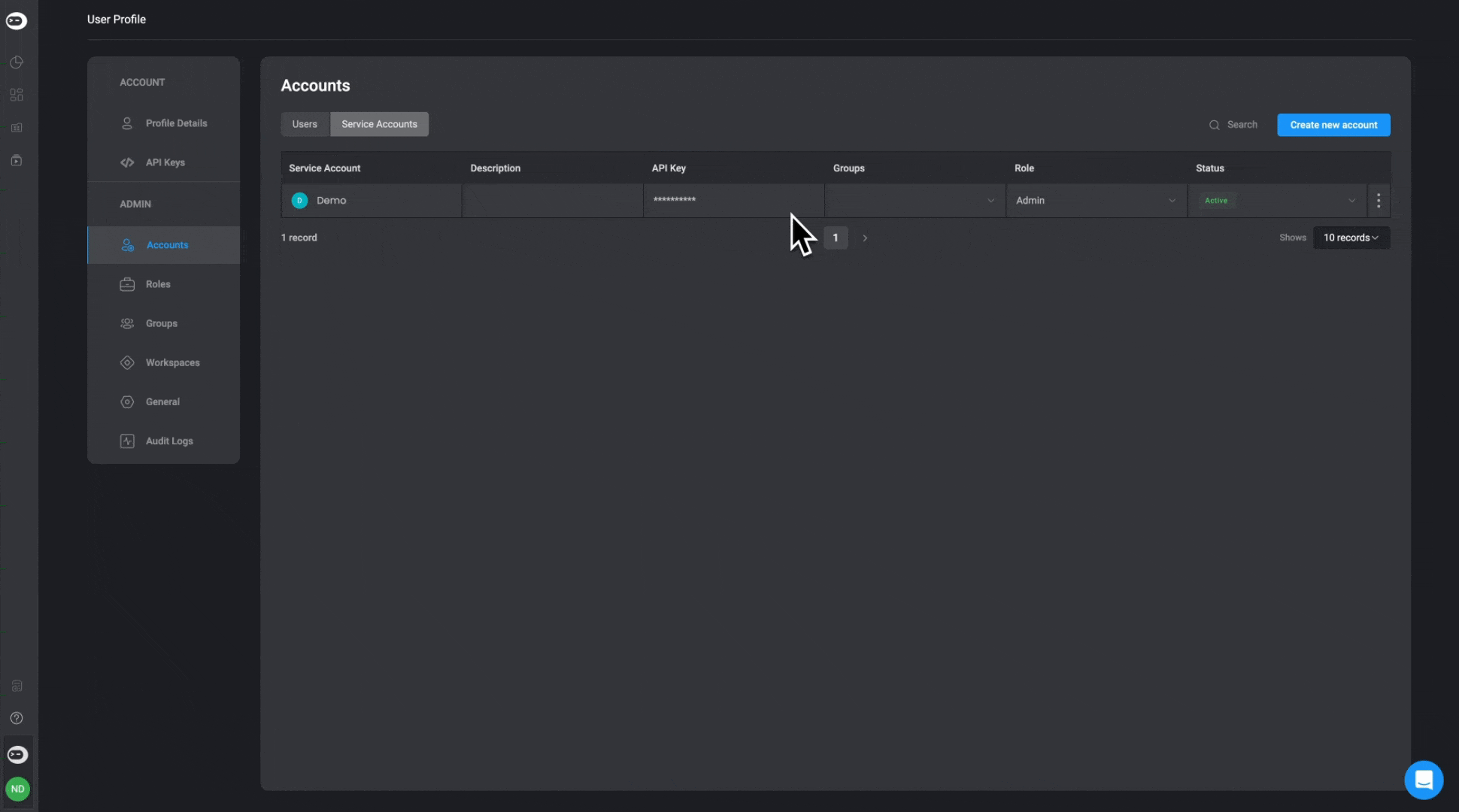Accounts
In the Blink Ops platform , there are two different accounts available: a user account and a service account.
User Account VS Service Account
A user account is an identity created for an individual to access and interact with systems, applications, and services, typically requiring authentication via a username and password, and often equipped with permissions aligned with the individual's role. On the other hand, a service account is designed for use by applications, services, or automated processes rather than human users. Service accounts are authenticated using credentials such as keys or tokens and are granted specific permissions to perform predefined tasks, allowing for secure and automated access to resources without human intervention. While user accounts are managed based on the individual's lifecycle, service accounts are managed according to the application's needs.
Users
Each company using Blink has a separate account, completely isolated from all other accounts. Only Admin users can invite new users, add, and remove users from groups.Users must be added to the account before they can use the Blink platform.An admin can invite a user to an account and then immediately add the user to groups and workspaces, and define a user role. As soon as the new user accepts the invitation, its workspaces, groups and roles are already set up, enabling the user to smoothly start working with the platform.

Inviting a New User
- Click on "Account" option. You will be navigated to the Accounts Page in your Account Settings.
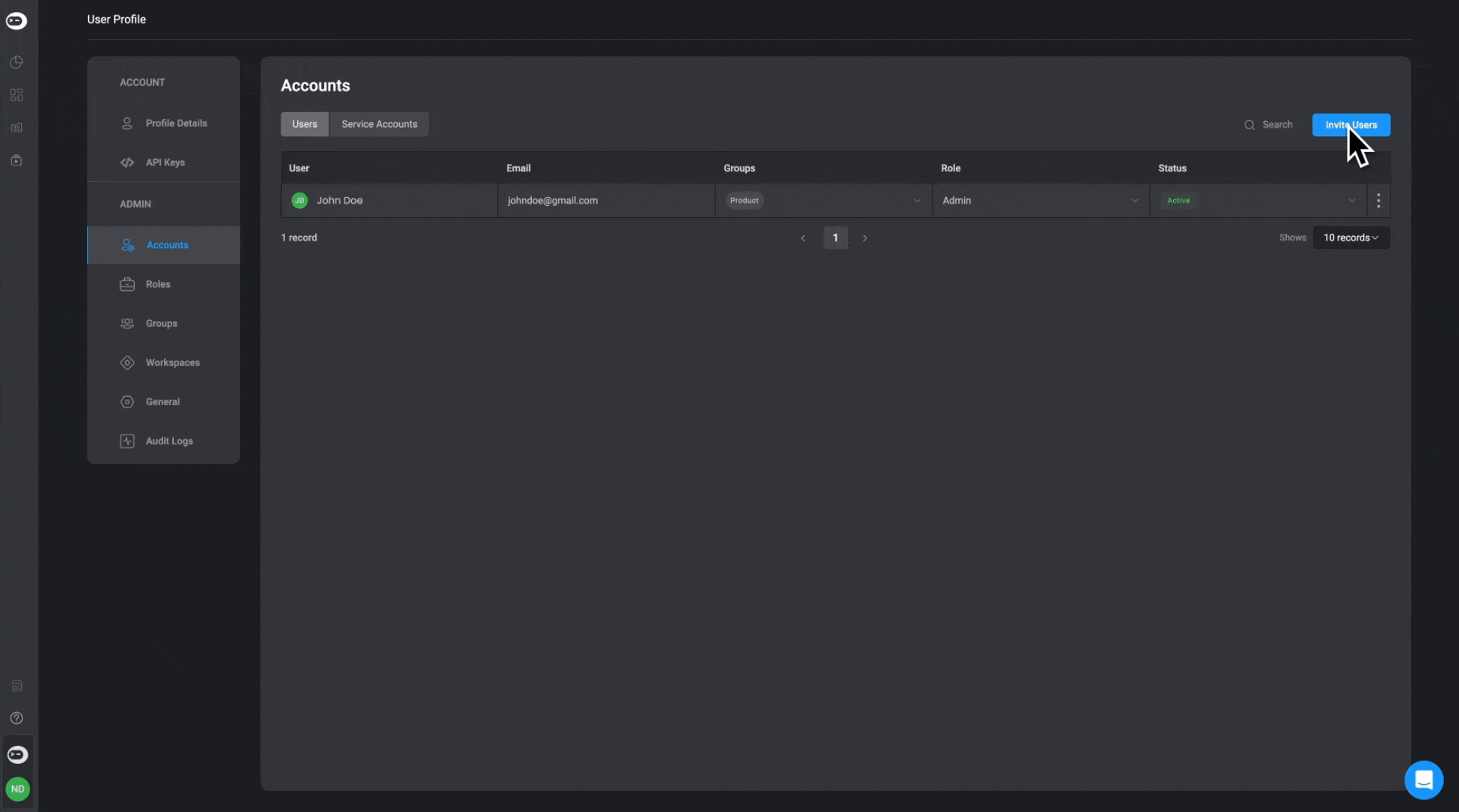
- In the Users tab of the Accounts page, click the "Invite User" button in the top-right corner. Provide the email address of the new user you would like to inviteThe user will receive an email invite and once accepted, appear in the member list of the account.There are three types of users:
- Admin: As an Admin, you have full access to all workspaces as well as control over all settings across the Blink Platform.
- Consumer: As a Consumer, you have full access to the self-service portal as well as read and write permissions in the user's Workspaces.
- Builder: As a Builder, you have complete access to read, write, and execute permissions within the user's Workspaces.
Checking the Status of a Member of your Account
A member can have one of the following statuses:
| User status | Description | Admin actions available |
|---|---|---|
| Active | The user has signed up to Blink. | Deactivate user, remove user or check which groups the user belongs to. |
| Inactive | The user is blocked from Blink. | Re-activate. |
| Invited | The user is invited to Blink. | Re-send or cancel the invite. |
The following screenshot shows Admin actions for an inactive user.

The following screenshot shows Admin actions for an invited user.

The following screenshot shows Admin actions for an active user.

Service Account
A service account is a specialized, non-human account used by lications, services, or automated processes to access resources and perform tasks. It is authenticated through credentials such as API keys or tokens and is granted specific permissions tailored to its intended functions, enabling secure and automated operations without human intervention. Only a Tenant- Admin users can create a service account and designate roles.
How to create a New Service Account
- Click on "Account" option. You will be navigated to the Accounts Page in your Account Settings.
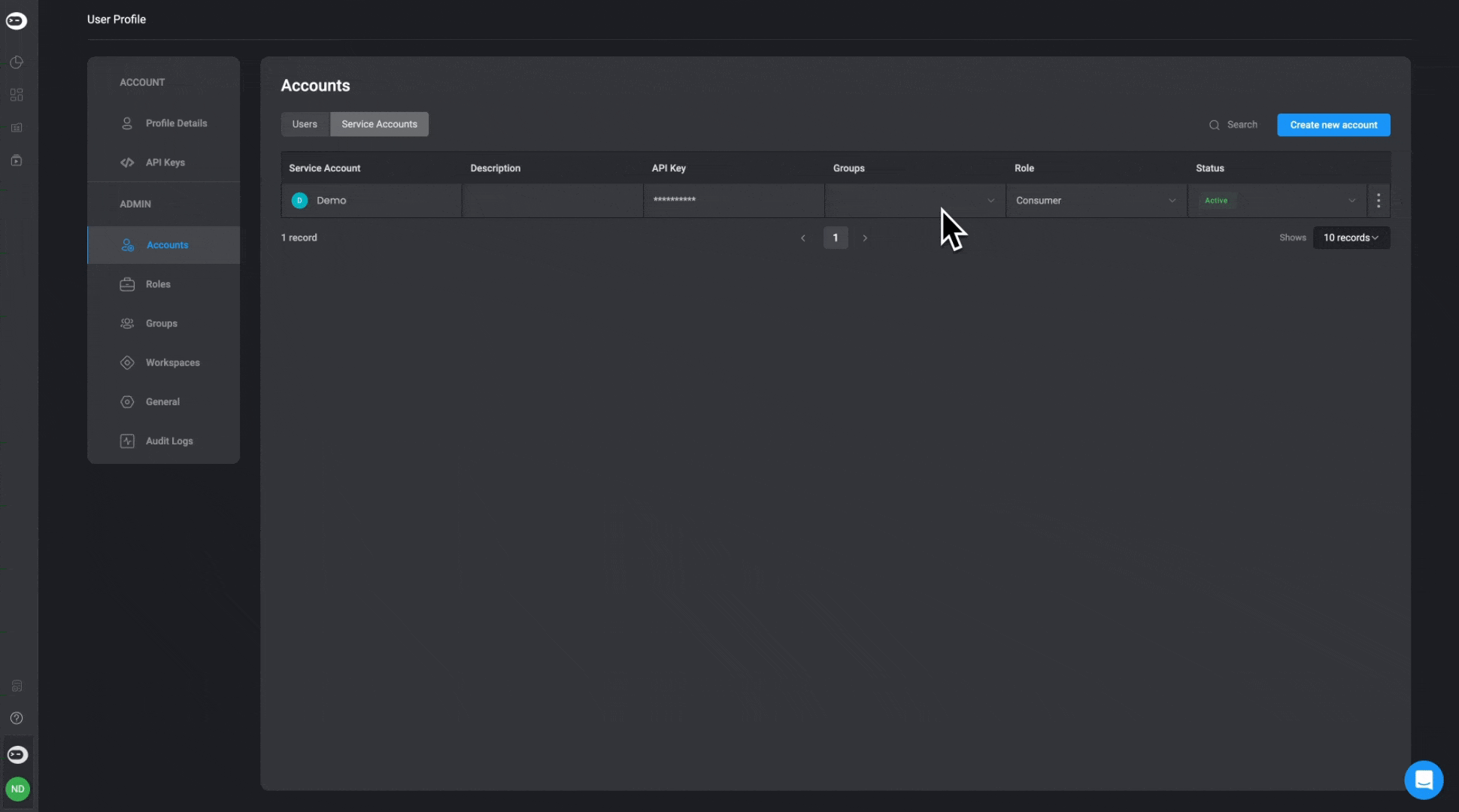
Navigate to the "Service Account" Tab. In the "Service Account" tab of the Accounts page, click the "Create new account" button in the top-right corner.
Provide a Name for your Service Account, optionally add a description and choose a role.
Admin: As an Admin, the account has full access to all workspaces as well as control over all settings across the Blink Platform.
Builder: As a Builder, the account has complete access to read, write, and execute permissions within the user's Workspaces.
infoIf the service account is assigned Tenant- Builder Role, the Tenant- Admin will have to invite the Service Account to each Workspace they want it to operate in.
Consumer: As a Consumer, the account has full access to the self-service portal as well as read and write permissions in the user's Workspaces.
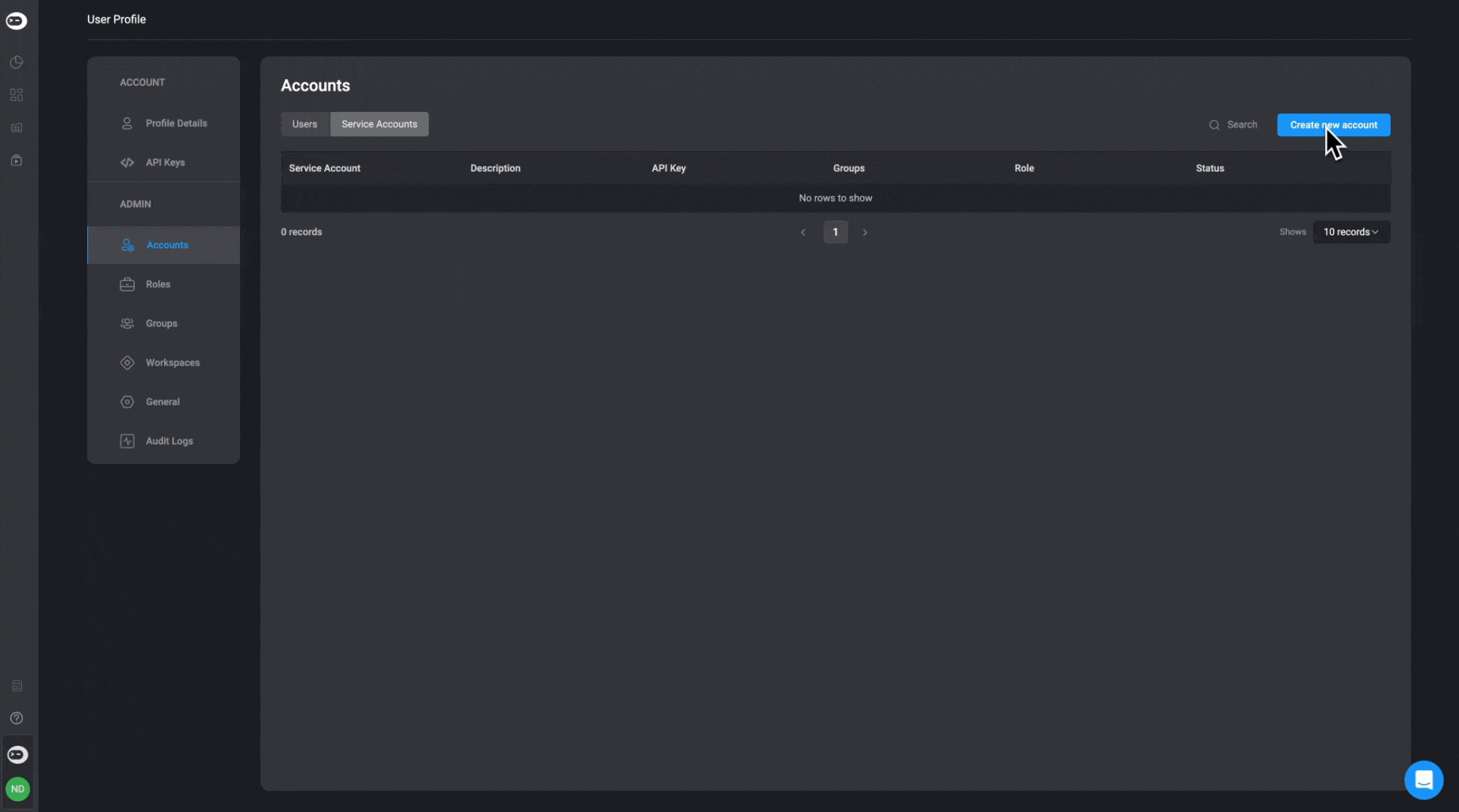
Editing a Service Account
- Click on the Service Account's table field you would like to make changes to. The changes will be applied automatically.

Deleting a Service Account
- Click on the
 icon in the last column and click on the delete option and confirm you want to delete the selected service account by clicking hte "Delete" button.
icon in the last column and click on the delete option and confirm you want to delete the selected service account by clicking hte "Delete" button.
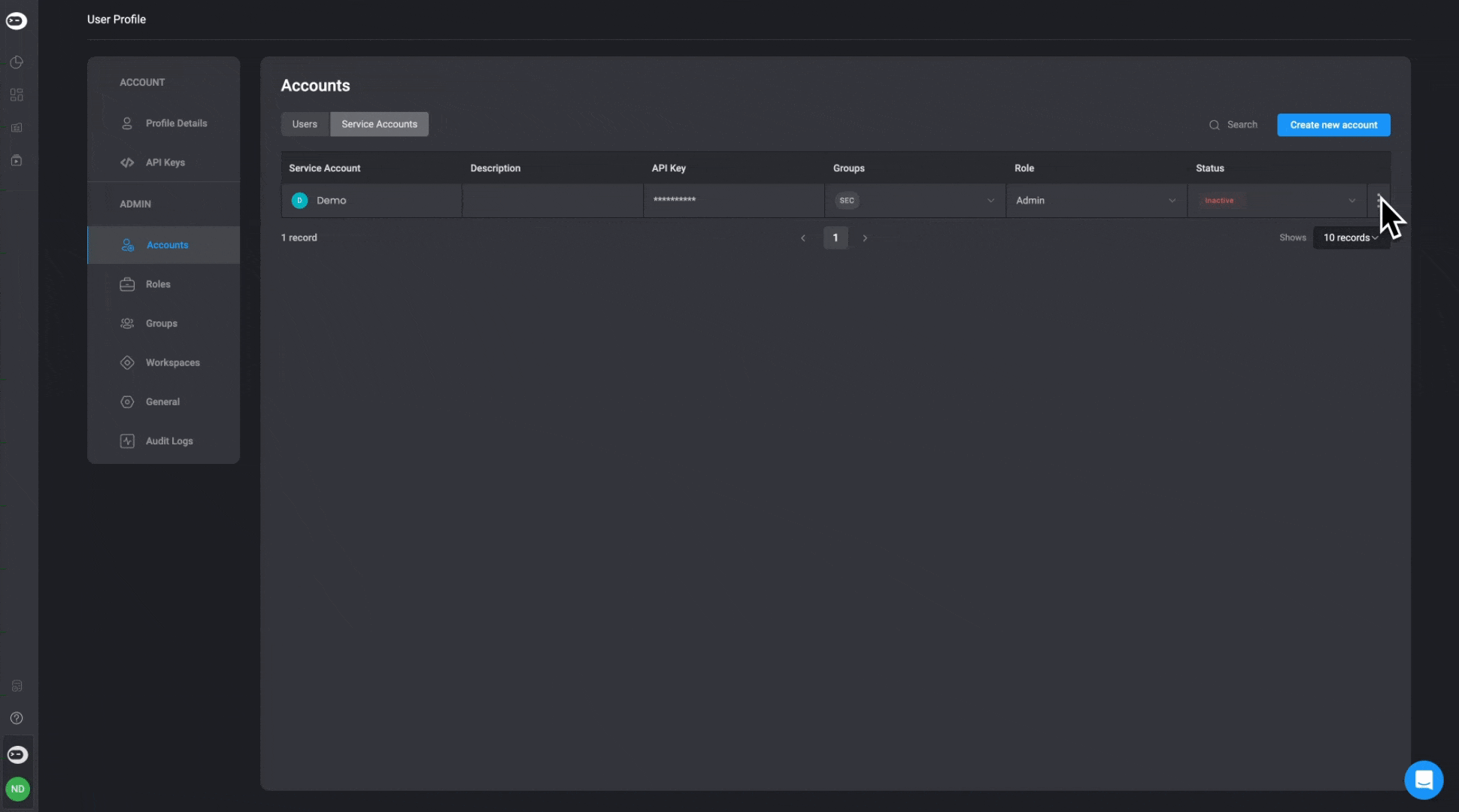
Service Account Information
Each service account is created with one API Key. Access the Service Account's API Key by
- Clicking on the
 icon in the last column and click on the "Account info" option and to view your service account's information and API key.
icon in the last column and click on the "Account info" option and to view your service account's information and API key.

OR
- Clicking the "clipboard" icon to copy your API Key.
